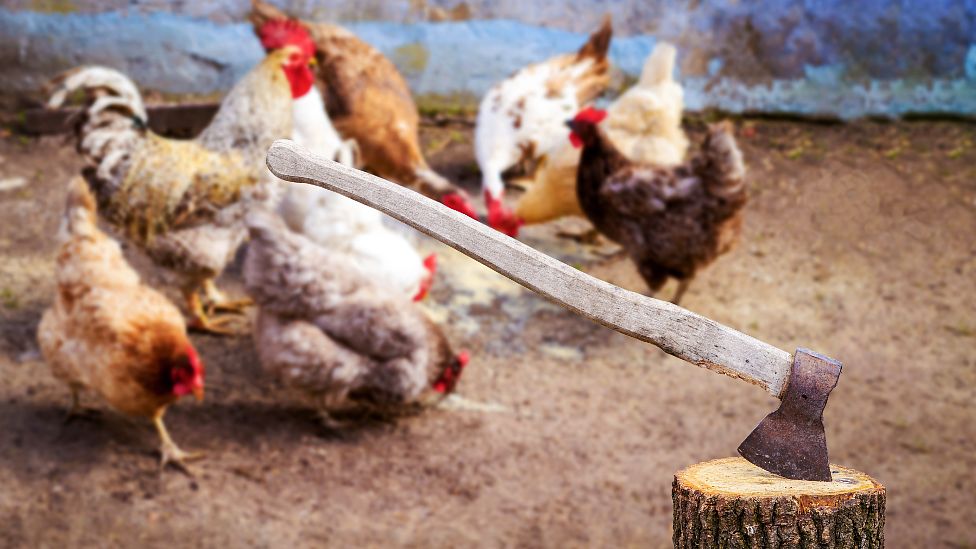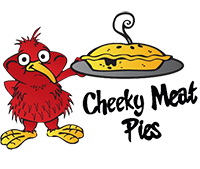You are responsible for your chickens’ health and welfare, including ensuring that they have a humane death when the time comes.
Ensuring a humane death requires that the method used results in rapid death, or loss of consciousness without pain, suffering, or distress followed by death.
The AVMA Guidelines for the Euthanasia of Animals: 2020 Edition state that ‘euthanasia methods should be chosen based on the welfare of the bird, human safety, skill and training of personnel, availability of equipment, and the ability to adequately restrain the bird’. For more information, see the full guidelines which are available here.
To keep chickens calm and reduce the chance that they will get stressed, you should always handle them quietly and gently. See this article for more information on low-stress and safe techniques for handling your chickens.
Killing a chicken can be an emotionally difficult task, but sometimes it becomes necessary for health or ethical reasons. When the time comes to humanely end a chicken’s life, it’s important to do it in the quickest, least stressful way possible. In this guide, I’ll walk you through the most humane methods for putting a chicken down, from cervical dislocation to decapitation.
Understand Why Humane Euthanasia May Be Necessary
There are a few situations where humanely killing a chicken becomes the ethical option
- The chicken is very old, injured, or sick, and cannot be treated or live without suffering
- The chicken poses a risk to other chickens due to infectious disease
- You can no longer adequately care for the chicken
Ending a chicken’s life is never an easy decision, but when the bird is suffering or poses a health hazard to the flock, humane euthanasia spares them further pain and prevents disease transmission.
Prepare The Tools And Location
Before beginning the euthanasia process, gather any tools you’ll need and choose an appropriate location:
- For cervical dislocation, you just need your hands. For decapitation, have a very sharp hatchet or axe ready.
- Pick a site that is out of view of other chickens, quiet, and can be easily cleaned up afterwards.
- Have a shovel ready to bury the remains when finished.
Ensuring you have everything prepared ahead of time helps make the process smoother and less stressful for both you and the chicken.
Approach The Chicken Calmly
Chickens often become agitated when picked up or restrained Before beginning, take measures to keep the chicken as calm as possible
- Move slowly and speak in a soothing tone of voice when approaching the chicken. Avoid sudden movements.
- Consider using a favorite treat to distract and comfort the chicken.
- Handle the chicken gently but firmly to restrict movement once grasped. Hold wings against body and clench legs between fingers.
A relaxed chicken will experience less fear and distress during the process. Taking the time to calm the bird makes euthanasia most humane.
Cervical Dislocation
When done right, cervical dislocation, which is also called “neck breaking,” is thought to be the fastest and kindest way to do it. Here are the steps:
-
Grasp the chicken’s legs in one hand and hold the wings against the body,
-
Place the chicken’s head on the ground and grasp the neck at the base of the head with your other hand.
-
To move the spinal cord out of place, quickly pull the neck up and backwards. A sharp crack will be heard.
-
Continue holding the chicken until all movement has ceased – this ensures the bird is deceased.
Cervical dislocation causes instant death when done quickly and decisively. Holding the remains prevents any involuntary muscle twitches.
Decapitation
Decapitation is another humane approach that causes rapid death. Follow these steps:
-
Restrain the chicken firmly by the legs and wings.
-
Locate the soft area at the base of the skull where it meets the spine.
-
Sharpen the blade of the hatchet or axe to be as sharp as possible.
-
Position the chicken’s neck stretched over a chopping block.
-
In one swift, strong motion, sever the head from the neck.
-
Immediately step away until all muscle movement ceases.
As long as the tool is very sharp, cutting off a head kills almost instantly and is thought to be very humane. Carefully restrain the bird to ensure proper positioning.
Bleeding Out
Bleeding out can be done humanely with proper equipment. Follow these steps:
-
Place the calm chicken head-first into a killing cone to restrict movement.
-
Use a sharp knife to deeply cut the jugular vein on one side of the neck.
-
Immediately penetrate the brain with the knife to ensure death.
-
Hang the cone until bleeding has ceased before removing the remains.
This is useful when preserving meat, but requires more technical skill to perform humanely. Stunning first is essential.
Key Things to Remember
When humanely killing a chicken, keep these tips in mind:
- Remain calm and focused throughout the process.
- Handle the bird gently – never swing or toss the chicken.
- Check for signs of sensibility after death occurs to confirm.
- Dispose of remains promptly and sanitize area afterwards.
- Don’t rush – humane euthanasia takes patience and care.
Working slowly and humanely, even when difficult, shows respect and prevents needless suffering.
When to Call a Veterinarian
If you don’t feel comfortable performing cervical dislocation or decapitation yourself, don’t hesitate to call your veterinarian. A vet can either euthanize the chicken for you or provide guidance on how to do it humanely. There’s no shame in admitting you need help giving a beloved bird the most peaceful passing possible.
Coping With Loss
Saying goodbye to a beloved chicken companion is never easy, even when you know it’s for the best. Be sure to give yourself time and space to grieve this loss. Consider having a small memorial service, crafting a tribute, or planting a tree in your chicken’s honor. Celebrate the joy your pet brought you, and know you ultimately acted with compassion.
With the proper technique and equipment, chickens can be humanely euthanized at home to minimize fear and suffering at end of life. While emotionally challenging, acting with care and respect can bring some comfort during this difficult process. With patience and preparation, your beloved bird can have the most peaceful passing possible.

Backyard chickens should always be euthanased by a veterinarian.
Note that it can be very stressful for your chicken to be separated from their flock mates and transported. So, if you can, you might want to ask your vet to come to your house for the euthanasia so that your chicken can stay with their flock mates in a place where they feel safe and at ease.
What should you do if you need to euthanasia right away but can’t get your vet to come to your house or get your chicken to the vet right away? Call the vet and ask for advice.
Remember overall it is your responsibility to protect the welfare of your hens, which includes ensuring they are euthanased or killed humanely. It is also important to be aware of your relevant state or territory, and local requirements for the keeping, killing, and disposing of backyard hens. Failure to comply with animal welfare legislation and regulations can result in prosecution and fines. The author of this piece is Bob Doneley, who is a professor of avian medicine and a registered specialist in bird medicine with the Avian and Exotic Pet Service.
- Home
- Companion Animals
- Other Pets
- Birds
- Backyard Poultry
https://kb.rspca.org.au/knowledge-base/how-should-backyard-chickens-be-euthanased-when-this-is-necessary/
How should backyard chickens be euthanased if they are sick or injured?
When chickens are killed because it is in the interest of their welfare, such as if they are sick or injured, it is usually termed ‘euthanasia’. In the unfortunate event one of your chickens gets severely sick or injured, you may have to decide whether euthanasia is the best option.
How to humanely euthanized a chicken (no tools)
0
